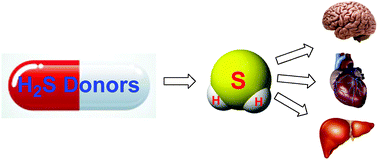Hydrogen sulfide (H2S) releasing agents: chemistry and biological applications
Abstract
Hydrogen sulfide (H2S) is a newly recognized signaling molecule with very potent cytoprotective actions. The fields of H2S physiology and pharmacology have been rapidly growing in recent years, but a number of fundamental issues must be addressed to advance our understanding of the biology and clinical potential of H2S in the future. Hydrogen sulfide releasing agents (also known as H2S donors) have been widely used in these fields. These compounds are not only useful research tools, but also potential therapeutic agents. It is therefore important to study the chemistry and pharmacology of exogenous H2S and to be aware of the limitations associated with the choice of donors used to generate H2S in vitro and in vivo. In this review we summarized the developments and limitations of currently available donors including H2S gas, sulfide salts, garlic-derived sulfur compounds, Lawesson's reagent/analogs, 1,2-dithiole-3-thiones, thiol-activated donors, photo-caged donors, and thioamino acids. Some biological applications of these donors were also discussed.


 Please wait while we load your content...
Please wait while we load your content...